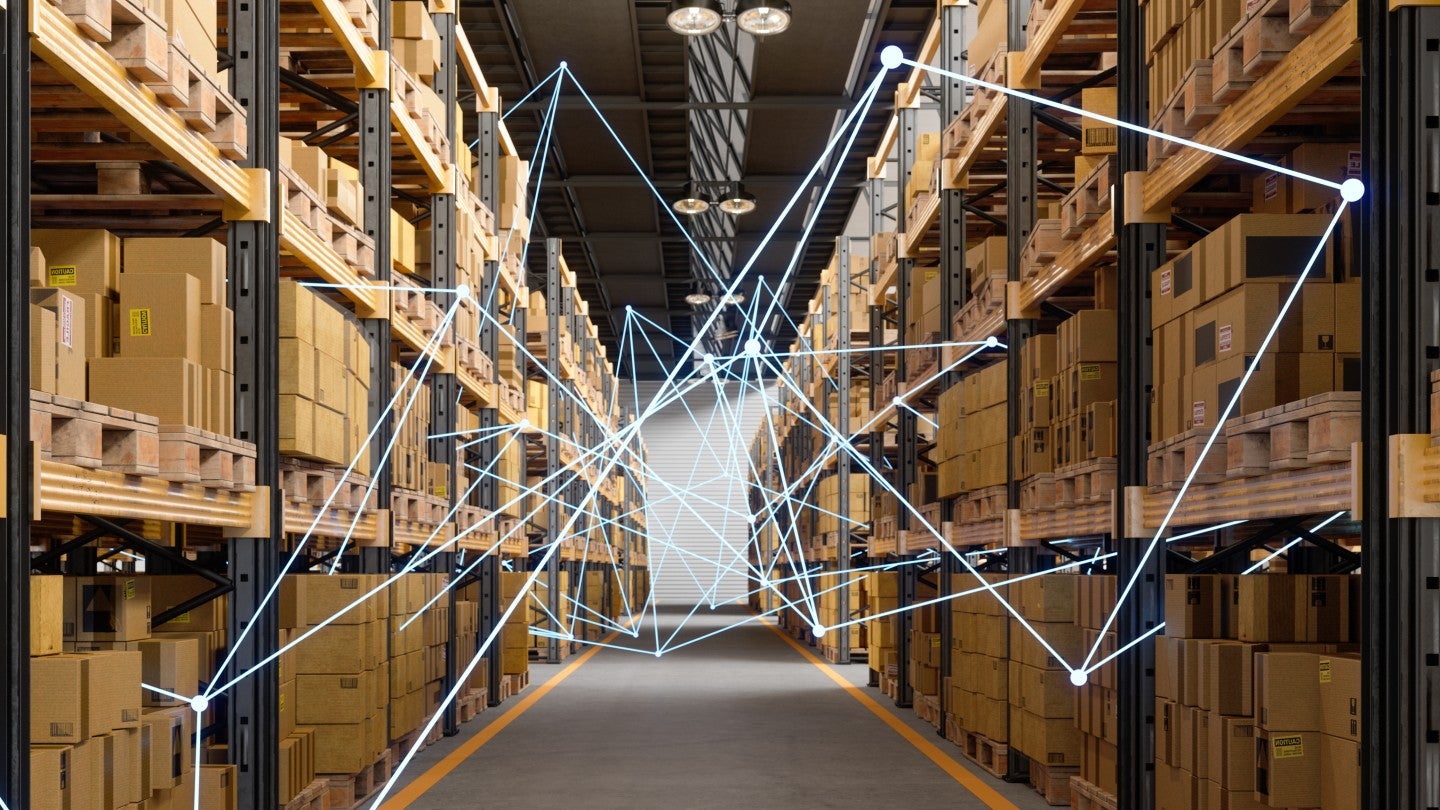
With global supply chains becoming increasingly complex for logistics firms to navigate, robotics and data intelligence company Dexory is providing robotics and an AI-powered digital twin platform technology to a host of companies across e-commerce, logistics and aviation.
Dexory’s customers range from shipping and logistic giant Maersk and DB Schenker, the logistic division of German rail operator Deutsche Bahn, to e-commerce fulfilment partner Huboo and logistics solutions company iB Cargo.
Talking to Verdict, CEO and Co-founder Andrei Danescu explains Dexory’s development of DexoryView, the company’s AI-powered digital twin platform, the importance and of data in logistics operations how this helps to fill the “visibility gap” that plagues global supply chains.
What advantage does DexoryView provide to businesses?
DexoryView is a data-intelligence platform that helps logistics providers to maximise visibility and accuracy of daily operations using autonomous robots to gather accurate real-time data and deliver actionable insights.
The platform automates data collection and builds real-time digital twins that unlock insights across all levels of warehouse operations. This allows companies immediate and real-time access to any location in their warehouse network - across all stages of the goods’ journey within a warehouse – from anywhere and at any time. Not only does this enable companies to automate their stock checks, but it also keeps track of occupancy, increasing efficiency and helping to facilitate profitable operations.
What were the challenges in developing digital twin technology and how did Dexory overcome them?
There are many different concepts that need to be included in a digital twin environment. These consist of 3D models that replicate the real world in a dynamic and insightful 3D dashboard that provides real-time data analysis. When we set out on this journey, we carried out extensive industry interviews on what were the most important issues the key players were facing and started to develop a model that would encapsulate all of this in a single intuitive platform.
How well do you really know your competitors?
Access the most comprehensive Company Profiles on the market, powered by GlobalData. Save hours of research. Gain competitive edge.

Thank you!
Your download email will arrive shortly
Not ready to buy yet? Download a free sample
We are confident about the unique quality of our Company Profiles. However, we want you to make the most beneficial decision for your business, so we offer a free sample that you can download by submitting the below form
By GlobalDataHowever, when creating the digital twin, we realised that there was a lot of data that was being generated in the warehouse and we wanted to go beyond what the initial customer requirements were to truly revolutionise the way warehouses operate. What we needed to understand was how to collect accurate 3D data using autonomous robots in environments over one million square feet on a daily basis. This required an understanding of engineering work to ensure that the robots were able to understand things like spatial dimensions, precision and to provide visual accuracy, all without impacting the daily operations at all.
How are you working with DB Schenker, Maersk and iB Cargo? How does your work with these companies differ or align?
In essence, both parties look to increase visibility of operations, across the large amount of racking infrastructure (including things like, stock, occupancy, tracking capabilities) all with a view to promoting maximum efficiency and optimising resource utilisation. The DexoryView solution has been introduced to their large warehouses to provide instant visibility into daily operations, from stock to space utilisation, and efficiency levels. Introducing solutions like ours enables them to stay at the forefront of technological advancements and pursue operational excellence.
When we first start to work with a customer or a prospective customer, their challenges are pretty universal. However, often when the discussions progress, and the more they see the functionality, there are often discussions about different data points that they want to track, or about extra sets of features they may not have thought of.
For example, with Maersk, the key driver for implementing the technology is to allow its staff to focus on key operations, ensure that the organisation is using space wisely and more profitably, whilst also attracting and retaining employees. The technology helps Maersk measure, track and locate goods across every logistics step, from inbound to storage to outbound. This helps them to protect and simplify its customers’ supply chains.
At the end of the day, for all of our customers, data is digital fuel and data insights are crucial. That is what they want to get their hands on so that they can better understand how they can utilise space better, how much stock they have, and how they can better prepare for peak periods in their business.
How do you build the system to deal with the large volumes of data it needs to process to provide real-time visibility?
Creating a digital twin of the warehouse involves collecting, analysing and managing large volumes of data. To ensure that our solution can process the data, we use robust data management systems like cloud computing and big data analytics, in combination with artificial intelligence. There are also other tools that need to be considered from the data processing point of view, especially for data cleaning. You want to be able to provide accurate real-time data and therefore need to remove things like noise, missing, or inconsistent data.
The next step is to then convert that data into a usable format. Providing a spreadsheet of data is no longer enough as you need to be able to provide actionable insights. Then finally, you need to reduce the data volume without losing critical information and this is where we use aggregation and sampling techniques.
All of these processes need to be run securely and concurrently so that the robots feed the digital twin platform with up-to-date and accurate information.
Where are the sources of friction in global supply chains and how does Dexory help address them?
Global supply chains have faced a challenging period that was onset by the global pandemic in 2020. Due to lockdown measures imposed by governments across the world, supply chains ground to a halt and to a greater extent, are still recovering from these shut downs.
Ongoing conflicts both in Ukraine, the Middle East, and in the Red Sea are further slowing down global supply chains. These are complex issues that have a widespread impact across industries and borders, calling for immediate action to enhance supply chain resilience.
The visibility gap is a major source of friction in building the industry’s much-needed resilience for the future. This manifests itself in various ways not only at the warehouse level, but also most evidently in the industry’s lack of access to real-time information on what happens at every stage in a good’s journey. Warehouses are often called the ‘black hole’ of global supply chains, so Dexory sheds light on their operations with full, real-time visibility. We do so with a digital twin platform where our customers can interact with actionable insights fed through a continuous stream of real-time data.
Dexory’s first step in transforming warehouse operations is automating data collection using fully-autonomous robots. Though more than 6,500 hours are dedicated annually to labour-intensive stock checks, there is a stark contrast between perceived and actual accuracy. Many businesses in the industry rely on 99% inventory accuracy, only to find out after just a few warehouse scans that the figure is often between 89% and 95%.
We ultimately help businesses by decreasing or eliminating inventory distortion with real-time actionable insights on space utilisation, put away, and picking efficiency. Today, our customers can close the visibility gap using our solution. But tomorrow, this will empower them to optimise, predict and grow. We aim to leverage our valuable proprietary data sets to enable unique predictive and prescriptive features using AI-driven insights to help collectively build a resilient, fully autonomous supply network.








